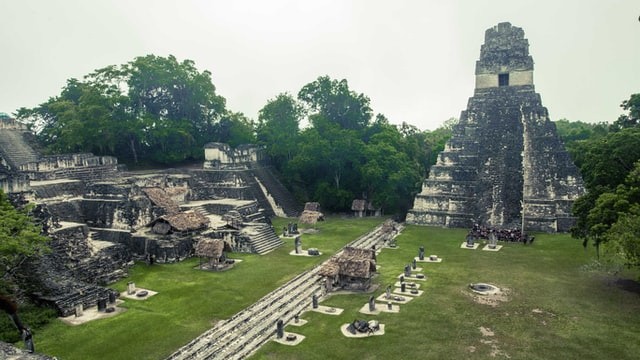The glyphs of an ancient frieze found in Oaxaca have been analyzed by archeologists from Mexico's National Institute of Anthropology and History, providing considerable insight into the cultural standards of the Zapotec and Mixtec cultures.
The limestone and stucco frieze was found in 2018 in the Atzompa zone of the Monte Albán archaeological excavation, a Unesco World Heritage Site constructed in the sixth century BCE and inhabited in succession by the Olmec, Zapotec, and Mixtec people before the Spanish invasion.
The ancient frieze that was discovered showing 'a time without time'

The roughly 50-foot limestone and stucco frieze, which dates between 650 and 850 CE, contains a sequence of glyphs done in high relief.
These are typical of Zapotec and Mixtec iconography and feature numerous figurative and numerical depictions of the Mixtec calendar's year of the lizard (Chila); a quetzal bird, a Mayan and Aztec sign of freedom and riches; and many protective figures.
According to Hyperallergic, the frieze surrounded the east and north walls of Casa del Sur, a prominent location that would have assured its exposure to travelers in the bustling city's ceremonial square.
Other famous imagery of the Zapotec culture featured on the facade includes representations of animals, such as jaguars, which are regarded as holy emblems of hereditary lineage, and pictures of the quincunx, a geometric pattern that invokes the four directions and the center of the cosmos.
The original frieze measured roughly 100 feet before being largely destroyed by the Zapotecs when they abandoned the site around 850 CE, according to INAH via the Smithsonian Magazine.
Based on the discovery of burial urn parts at the site, archeologists assume the frieze was largely destroyed by Zapotecs who had departed the place.
According to Nelly Robles Garcia, the cultural heritage institution's national coordinator of archeology, the effigies are thought to have been sacrificial sacrifices given with the purpose of demystifying the place.
Materials such as limestone and stucco, she continues, need a high level of competence in their handling and repair.
Among the institution's conservation concerns, the frieze should be regarded as one of the most important artifacts.
Monte Albán has huge plazas and truncated pyramids in the Teotihuacán architectural style, as well as intricate underground corridors, a tlachtli ball court, and approximately 200 exquisite lineage tombs.
It was inhabited by the Mixtec throughout the 16th century Spanish colonization.
Archaeological excavations in the region are continuing.
What is a frieze pattern?
According to Math & the art of MC Escher, a frieze pattern is an endless strip with a repeating pattern. It is also known as a border pattern or an infinite stripe pattern.
A frieze is a decorative carving or pattern that runs horizontally immediately below a roofline or ceiling in architecture.
Because the patterns repeat, experts bonly display a section of them, but keep in mind that these images should stretch infinitely long in both directions.
Although the majority of the frieze designs are horizontal, there's no reason why a frieze pattern can't also be vertical or put at an angle.
Translation symmetry exists in all frieze designs.
A horizontal frieze pattern seems the same whether slid to the left or right, a vertical frieze pattern appears the same whether slid up or down, and any frieze pattern appears the same whether slid along the line it is laid out on.
Again, it is critical that the pattern extends infinitely far in both directions so that no "endpoints" appear to be distinct.
© 2026 NatureWorldNews.com All rights reserved. Do not reproduce without permission.





